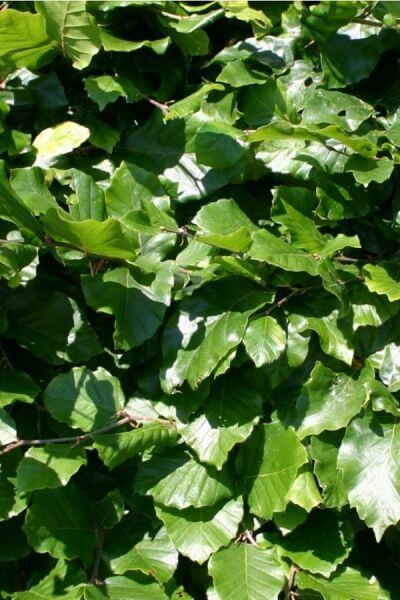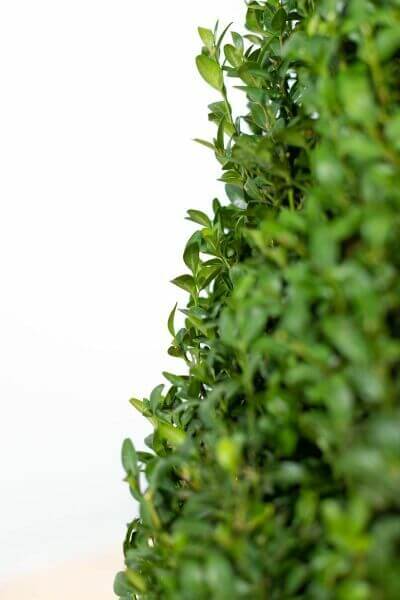Best Hedging Plants For Raised Beds
Best Hedging Plants For Raised Beds
Blog Article
Hedge Plants For Container Gardening
Improve your garden's appeal with rich hedge varieties such as Yew (Taxus), Thuja, Laurel, Photinia, and Bamboo, commemorated for their structural stability and ecological advantages.
Yew and Thuja supply evergreen coverage and winter durability, while Laurel offers quick development and broad, fragrant leaves.
Photinia adds seasonal charm with its vibrant red foliage, and Bamboo provides a low-maintenance, peaceful ambiance.
These hedges improve air quality, lower noise, and produce tranquil, personal areas.
Appropriate planting, spacing, and upkeep guarantee energetic development and ecological consistency.
Explore how these rich ranges can raise your garden's beauty and well-being.
Secret Takeaways
Change Your Garden With Lush Hedge Varieties
- Select Yew for its dense, evergreen growth and unparalleled longevity.
- Opt for Laurel for its fast growth and broad leaves, guaranteeing fast personal privacy.
- Pick Photinia for its vibrant seasonal foliage, which turns a striking dark red.
- Utilize Bamboo for a low-maintenance, winter-hardy hedge with aesthetic appeal.
- Space plants 2-3 per meter and prune routinely for ideal development and health.
Popular Hedge Plants
When changing a garden with lush hedge varieties, it's vital to think about popular hedge plants such as Yew, Thuja, Laurel, and Photinia due to their special characteristics and advantages.
Yew (Taxus) is extremely respected for its durability and thick, green growth, making it a prime choice for withstanding landscapes.
Thuja is kept in mind for its evergreen foliage and robust winter durability.
Photinia adds seasonal vibrancy with red leaves that darken gradually, developing vibrant visual appeal.
Laurel provides fast growth and aromatic, broad leaves, ideal for fast personal privacy.
In Addition, Bamboo is an exceptional option for atmosphere, using a low-maintenance, winter-hardy option that enhances the garden's aesthetic with its sophisticated, swaying walking sticks.
These selections cater to a variety of horticultural needs and choices.
Advantages of Garden Hedges
Garden hedges provide a wide range of benefits, making them an important addition to any landscape. These natural barriers are economical to execute and supply considerable wind security, enhancing air blood circulation and adding to noise reduction. The thick foliage of hedges like Thuja and Beech ensures personal privacy by blocking visibility, developing a remote and peaceful environment.
Hedges likewise play a vital role in microclimate guideline, offering a stable environment that promotes plant growth and lessens temperature variations. Their complex leaf structures filter pollutants, enhancing air quality and contributing to a healthier garden environment.
Furthermore, hedges stand out in noise decrease, absorbing and deflecting acoustic waves to lower ambient sound levels. This dual functionality of supplying both visual and acoustic personal privacy enhances the total tranquility and visual appeal of any garden.
Planting and Upkeep Tips
For a successful hedge, precise preparation of the planting location is essential. Guarantee the soil has correct pH and drainage to support strong root development.
Area the plants appropriately for the selected types. Water the hedge regularly during its initial development stage, adjusting as needed with seasonal modifications.
Carry out a systematic pest control and disease avoidance strategy, using chemical or natural treatments when necessary. Regularly examine for aphids, termites, and fungal infections.
Apply mulch to maintain wetness and reduce weeds. Seasonal pruning promotes thick growth and air circulation, essential for plant health.
Following these guidelines will help you cultivate a dynamic, well-kept hedge that improves the appeal of your garden.
Spacing and Cutting Standards
Spacing and Cutting Standards
Correct spacing and cutting are vital for cultivating healthy, visually appealing hedges. Adequate spacing ensures each plant receives sufficient nutrients, light, and air flow.
Follow these standards for optimum hedge upkeep:
- Spacing: Position hedge plants 2-3 plants per meter to motivate robust development.
- Pruning Methods: Regular pruning is important for maintaining desired hedge height and shape. Trim brand-new development in summertime and cut back older wood during winter.
- Seasonal Care: Adjust cutting schedules and approaches according to seasonal requirements to guarantee plant health.
- Hedge Height: Routinely monitor and cut to keep the preferred hedge height and accomplish uniform aesthetics.
Following these actions will guarantee your hedge flourishes, boosting both the appeal and performance of your garden.
Selecting the Right Hedge
Choosing the Right Hedge
Picking the suitable hedge involves examining elements such as mature height, foliage density, and ecological durability. Successful Additional resources hedge plant choice requires understanding each types' growth attributes and site-specific flexibility.
For example, Yew (Taxus) uses outstanding longevity and thick growth, while Thuja is noteworthy for its winter strength. Additionally, thinking about maintenance requirements is vital; fast-growing species like Laurel or Privet need routine trimming, whereas low-maintenance alternatives like Bamboo or Ivy might be more effective for those seeking very little upkeep.
Ecological factors such as soil type, light accessibility, and wetness conditions ought to likewise guide the selection procedure. This careful method guarantees the selected hedges will thrive, offering both aesthetic and practical benefits to the garden landscape.
Shipment and Planting Advice
To ensure your hedge plants prosper, they need to be provided by specialized couriers and planted quickly upon arrival.
Follow these important steps for effective planting:
- Soil Preparation: Improve the soil with raw material to improve drainage and nutrient material.
- Planting Depth: Produce a trench twice the width and equal to the depth of the root ball.
- Watering Strategies: Water completely after planting, keeping the soil consistently wet however not saturated.
- Mulching: Apply a layer of mulch to retain wetness and reduce weeds.
Client Support and Service
Offered the essential role of prompt support in horticultural pursuits, our customer assistance team is available 6 days a week through telephone, email, and social networks to offer skilled recommendations and swiftly attend to any concerns. Their devotion to quick action times ensures consumer complete satisfaction by dealing with queries related to plant health, optimum planting techniques, and maintenance schedules.

Reaction Time
Within 24 hours
This detailed support group, enhanced by an excellent 9.3/ 10 client rating, highlights our dedication to enhancing the gardening experience for every single customer.
Regularly Asked Questions
The Length Of Time Does It Consider Hedge Plants to Establish?
Hedge plants generally need one to three years to end up being fully developed, with the exact period differing by species and growing conditions.
Effective care throughout this crucial duration is important for robust development. Consistent watering, watchful weed control, and proper fertilizer application are critical in promoting strong root advancement.
For example, fast-growing species like Laurel may develop quicker, while slower-growing ranges such as Yew may take longer. Diligent upkeep speeds up the establishment process, leading to healthy and dense hedges.
What Are the Best Hedge Plants for Personal Privacy?
The concern of the best hedge plants for privacy includes evaluating evergreen and deciduous options.
Evergreen hedges like Thuja, Laurel, and Cypress offer year-round protection, making sure continuous privacy.
On the other hand, deciduous hedges such as Beech offer seasonal privacy, shedding leaves in cooler months.
Key maintenance suggestions for personal privacy hedges consist of routine cutting, fertilizing in spring, and correct spacing-- typically 2 to 3 plants per meter.
Additionally, consistent watering and diligent weed removal are essential for promoting healthy, dense growth.
Can Hedge Plants Draw In Wildlife to My Garden?
Yes, hedge plants can bring in wildlife to your garden by supplying necessary advantages like shelter, food, and nesting websites, consequently improving local biodiversity. Yew, holly, and laurel are excellent for bring in birds, while ivy supports a range of bugs.
However, it is necessary to note that there are some downsides, such as increased upkeep to manage pests and routine maintenance. Carefully selecting and keeping hedge ranges can help stabilize these drawbacks and advantages, ultimately cultivating a lively and sustainable ecosystem in your garden.
Exist Any Flowering Hedge Plants Available?
Yes, there are flowering hedge plants readily available that can improve the beauty of your garden.
For instance, Elaeagnus, also understood as Olive Willow, produces fragrant white flowers in the fall, including a touch of beauty.
Photinia, another popular option, showcases dynamic red leaves that grow into a rich green, creating a dynamic visual impact throughout the seasons.
To ensure these plants flourish, it's vital to practice proper pruning techniques and seasonal maintenance, such as cutting brand-new development in the summer and cutting back in the winter season.
These measures will help maintain the health and aesthetic appeal of your blooming hedges.
How Do I Avoid Pests in My Hedge Plants?
To avoid insects in hedge plants, employ natural pest control techniques and keep correct hedge care. Present helpful pests like ladybugs, which prey on harmful pests, to create a well balanced environment.
Routinely examine your hedges for indications of invasion and without delay get rid of any affected parts to prevent the spread. Ensure the health of your hedges by using well balanced fertilizers and supplying appropriate water.
Use mulching to keep soil moisture and proper spacing to decrease plant stress and promote robust growth. These practices jointly assist in lessening insect issues and maintaining a healthy hedge.
Conclusion
In essence, picking the best hedge varieties such as Yew, Thuja, and Laurel can transform any garden into a serene sanctuary. These plants offer year-round greenery, boost visual appeal, and offer useful advantages like noise reduction and wind protection.
Correct planting strategies, accurate spacing, constant watering, and seasonal cutting are important for optimal development.
Trustworthy delivery services and expert consumer support make sure a seamless experience from purchase to planting, making it easier than ever to elevate your outdoor space.
Garden hedges offer a plethora of benefits, making them an important addition to any landscape. These natural barriers are affordable to carry out and offer significant wind security, boosting air flow and contributing to sound reduction. The thick foliage of hedges like Thuja and Beech ensures personal privacy by obstructing exposure, developing a secluded and peaceful environment.

Pruning Methods: Regular pruning is necessary for keeping preferred hedge height and shape. Trim brand-new growth in summer and cut back older wood throughout winter.
Report this page